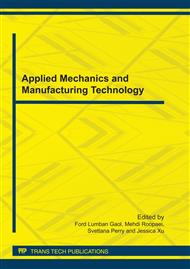p.1
p.14
p.20
p.26
p.30
p.38
p.43
p.49
p.55
Multiobjective Optimization of Hybrid Electrical Vehicle Powertrain Mounting System Using Hybrid Genetic Algorithm
Abstract:
Powertrain mounting system of a Hybrid Electrical Vehicle (HEV) is analyzed and researched, the expression of energy distribution matrix and that of mounting reaction force are derived, and mathematical model of the system is established in Matlab. Correctness of the model established is tested and verified through model establishing for simulation and calculation in ADAMS. Features of Hybrid Genetic Algorithm (HGA) for multiobjective optimization are analyzed and researched, model for calculation of multiobjective optimization using Hybrid Genetic Algorithm is established, targets for optimization of the system are determined, and optimization is executed based on the mounting stiffness parameters. The result that the system is optimized apparently by Hybrid Genetic Algorithm is revealed through contrast of the energy distribution matrix and mounting reaction force of pre and post-optimization.
Info:
Periodical:
Pages:
30-37
Citation:
Online since:
August 2011
Authors:
Price:
Сopyright:
© 2011 Trans Tech Publications Ltd. All Rights Reserved
Share:
Citation:


